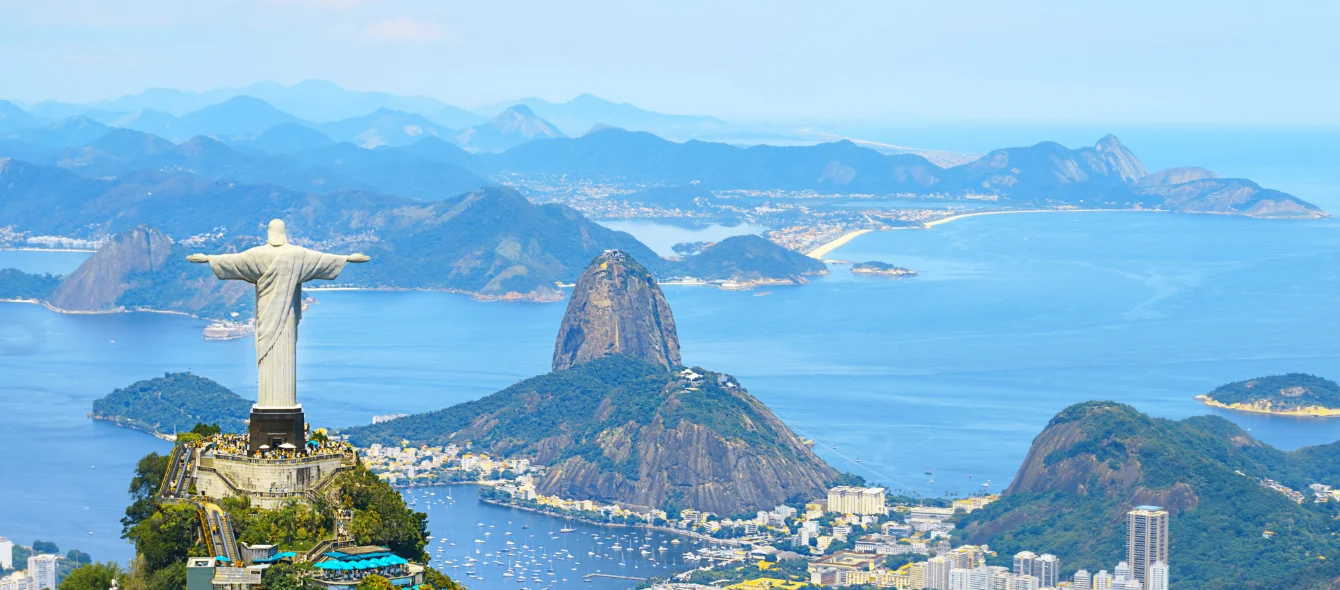Brazil’s longstanding development of renewable energy is set to enter new territory, following a decree issued in January, which sets out the legal and regulatory framework for offshore wind development. Brazil’s Wind Energy Association, ABEEólica, described the decree as a “crucial advance” for the sector, and the country could hold its first auction for offshore wind as early as this year.
Renewable pioneer
Brazil has proven its pioneering spirit in the renewable energy sphere in more ways than one. It was among the first to establish auction processes for renewable energy development, by creating auction laws in 2004.
Brazilian renewable energy capacity 2020
in MW, source: IRENAIt held its first wind-only auction in 2009. This saw formerly incremental growth in onshore wind capacity surge from 2013, rising from 2.2 GW then, to 17.2 GW in 2020. Last year, capacity surpassed the 20 GW mark, by far the most in South America, creating the eighth largest onshore wind market globally.
Hydro dominance
However, Brazil’s renewable energy story has other remarkable characteristics.
The country’s total power generation is the seventh largest in the world, yet one of the greenest, owing to the huge proportion of power demand met by hydropower. Hydro accounted for 64% of the country’s 619.1 TWh of generation in 2020. In total, Brazil has 109.3 GW of hydro power capacity, more than the US and second only to China.
While providing huge amounts of renewable energy, this dependence brings its own challenges. Severe drought last year saw reservoir levels plummet, forcing Brazil to fall back on natural gas to generate electricity.
Moreover, changing climate patterns threaten to reduce rainfall in the north-eastern, central and southwestern areas of the country and increase it in the northern, centre-west and southern parts.
In addition to increased evaporation as a result of higher temperatures, changing rainfall patterns could leave many of the country’s hydro plants under used. Climate change projections show increasing water deficit in almost all of Brazil.
Ethanol forerunner
Brazil is also the world’s second largest producer of biofuels and has used ethanol in its fuel mix since 1931. Use of the fuel varied, largely depending on the price and availability of oil and demand for sugar, as ethanol in Brazil is mainly derived from sugar cane.
From 1975, Brazil increased the amount of ethanol in gasoline and initiated the conversion of vehicles to 100% ethanol use. The first cars designed to run on neat ethanol started to roll off the production line in 1979.
Sugar cane is harvested twice a year in Brazil, and the leftover residues from cropping, known as bagasse, can be burnt as biomass. Vinasse, a by-product of producing ethanol from sugar cane, has also been used in anaerobic digestors to produce biomethane. In 2020, biomass generated almost as much power as gas-fired generation in Brazil, both of which were on a par with wind.
Biofuels represent about 25% of transport fuels in Brazil, an exceptionally high level by international comparison, and the share is still rising. Bioenergy also accounted for more than 50% of heat provision, while wind and solar are adding to the already large proportion of renewable electricity generation coming from hydropower.
Offshore frontier
Yet one massive renewable energy resource remains untouched and it is to this which Brazil’s attention is now turning.
The Energy Research Office (EPE) has taken a lead role in championing offshore wind by providing the first institutional effort to map the country’s resource. EPE has subsequently brought offshore wind into Brazil’s possible future energy mix.
The results are receiving global attention.
EPE estimates that Brazil’s huge coastline offers technical potential for about 700 GW on sites which extend up to 50 meters water depth, i.e. traditional fixed-bottom installations. This estimate is for wind speeds above 7 m/s at 100 metres height above sea level. While high potential sites are widespread, the best locations are in northeast Brazil, which accounts for almost half of the technical potential.
Brazilian wind capacity
in MW, source: BP Statistical Review of World Energy, 2021, * estimateProject pipeline
Up until January 2020, six offshore wind projects were undergoing preliminary environmental licensing at the Brazilian Institute of Environment and Renewable
Natural Resources (Ibama). In Brazil, environmental permits also cover proposed transmission lines to the national grid, which can include substantial onshore as well as offshore sections.
As of July last year, seven projects, totalling 15.2 GW, were seeking environmental licensing. Today, almost 50 projects have been proposed, with more than 80 GW being assessed by Ibama, offering far more capacity than the government’s initial goal of 16 GW by 2050.
However, while 33 offshore wind areas have been indentified, none are yet operational and the huge number of applications has created a problem in that many projects overlap, an issue which remains to be resolved. Moreover, while the January decree is expected to come into effect in June this year, the government has still to define many of the rules and regulations covering development.
With offshore wind’s high capacity factors and falling costs, with a clearer regulatory framework, Brazil could, over the next decade, be able to build the foundations for a huge new renewable energy sector, well-sited to meet the demand of its power-hungry coastal regions. Offshore wind could both support and compliment hydropower, while making a major contribution to reducing Brazil’s greenhouse gas emissions.
